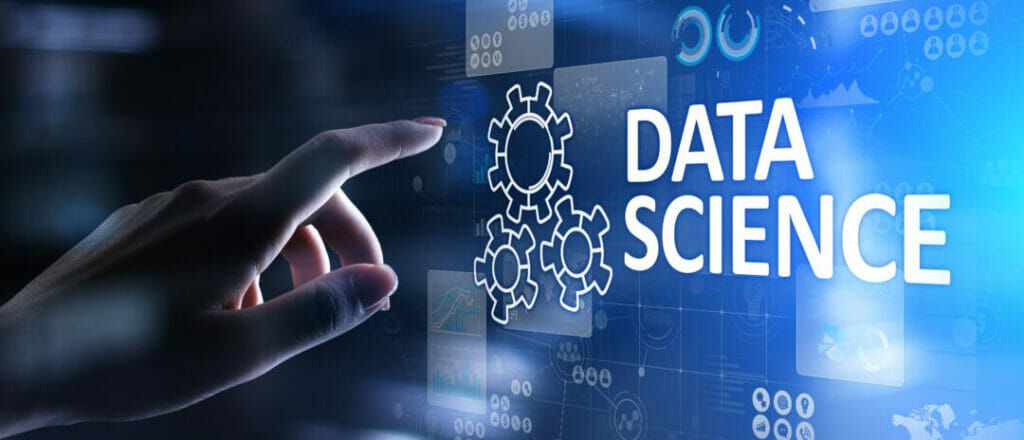
Data is all around us. It is estimated that each day, a staggering 2.5 quintillion bytes of data are created. With a number so mind-boggling, it’s easy to see how much of an impact data can have.
With data taking over the world, you just might be curious enough to learn a little bit about data science. Here, we provide a basic introduction to data science. We’ll be discussing what it is, why it’s important, and what the future holds for data science.
What is data science?
In 2001, William S Cleveland combined computer science with data mining to create a more technical approach to statistical analysis. As a result of this combination, data science was born.
To put it simply, data science is the combination of programming, mathematics, and statistics to extract meaningful insights. It is an umbrella term that encompasses any techniques, tools, and concepts that relate to useful data.
Data Science is a blend of various tools, algorithms, and machine learning principles with the goal to discover hidden patterns from the raw data.
As you can see from the above image, a Data Analyst usually explains what is going on by processing history of the data. On the other hand, Data Scientist not only does the exploratory analysis to discover insights from it, but also uses various advanced machine learning algorithms to identify the occurrence of a particular event in the future. A Data Scientist will look at the data from many angles, sometimes angles not known earlier.
So, Data Science is primarily used to make decisions and predictions making use of predictive causal analytics, prescriptive analytics (predictive plus decision science) and machine learning.
Why data science is important
The data collected from data science can be used in various ways within a business. It’s not just the data teams that utilise it – marketers, software engineers, and those making business decisions all have a hand in data science.
By analysing data, we can determine trends and patterns to help us make better decisions within a business. These decisions will vary greatly depending on the type of business, but data acts as a useful tool to make informed decisions.
Rather than going in blind and assuming the outcome of a campaign or a business strategy, we can interpret and analyse data sets. By doing so, we’ll have evidence that our work has the potential to make a difference.
Data science tools
- Programming languages – Programming skills can help you extract data, clean data, and even visualise it. Some of the most common languages used in data science are Python, R, and SQL.
- Visualisation tools – these are used to make data digestible. Some data visualisation tools include Tableau, Google charts, and data wrapper.
- Database management systems – used to store and manage vast amounts of data; some examples include Snowflake and MySQL.
Lifecycle of Data Science
Here is a brief overview of the main phases of the Data Science Lifecycle:
Phase 1 — Discovery: Before you begin the project, it is important to understand the various specifications, requirements, priorities and required budget. You must possess the ability to ask the right questions. Here, you assess if you have the required resources present in terms of people, technology, time and data to support the project. In this phase, you also need to frame the business problem and formulate initial hypotheses (IH) to test.
Phase 2 — Data preparation: In this phase, you require analytical sandbox in which you can perform analytics for the entire duration of the project. You need to explore, preprocess and condition data prior to modeling. Further, you will perform ETLT (extract, transform, load and transform) to get data into the sandbox. Let’s have a look at the Statistical Analysis flow below.
You can use R for data cleaning, transformation, and visualization. This will help you to spot the outliers and establish a relationship between the variables. Once you have cleaned and prepared the data, it’s time to do exploratory analytics on it. Let’s see how you can achieve that.
Phase 3—Model planning: Here, you will determine the methods and techniques to draw the relationships between variables. These relationships will set the base for the algorithms which you will implement in the next phase. You will apply Exploratory Data Analytics (EDA) using various statistical formulas and visualization tools.
Let’s have a look at various model planning tools.
- R has a complete set of modeling capabilities and provides a good environment for building interpretive models.
- SQL Analysis services can perform in-database analytics using common data mining functions and basic predictive models.
- SAS/ACCESS can be used to access data from Hadoop and is used for creating repeatable and reusable model flow diagrams.
Although, many tools are present in the market but R is the most commonly used tool.
Now that you have got insights into the nature of your data and have decided the algorithms to be used. In the next stage, you will apply the algorithm and build up a model.
Phase 4—Model building: In this phase, you will develop datasets for training and testing purposes. Here you need to consider whether your existing tools will suffice for running the models or it will need a more robust environment (like fast and parallel processing). You will analyze various learning techniques like classification, association and clustering to build the model.
You can achieve model building through the following tools.
Phase 5—Operationalize: In this phase, you deliver final reports, briefings, code and technical documents. In addition, sometimes a pilot project is also implemented in a real-time production environment. This will provide you a clear picture of the performance and other related constraints on a small scale before full deployment.
Phase 6—Communicate results: Now it is important to evaluate if you have been able to achieve your goal that you had planned in the first phase. So, in the last phase, you identify all the key findings, communicate to the stakeholders and determine if the results of the project are a success or a failure based on the criteria developed in Phase 1.
What is the future of data science?
We’ve already explored how rapid the growth of data science has been in recent years. But what can we expect for the future of data science? Will we continue to see the data science industry soar?
The big data market value has been growing each year. In 2020, the global big data and business analytics market was valued at 198.08 billion USD. By the year 2030, it is projected to reach 684.12 billion USD.
Data science trends are constantly adapting – whether it’s new technologies or new advancements within current tools.
Conclusion
Data science is an increasingly important component of any business – it provides crucial insights for informed decision-making. The industry continues to grow and create new job opportunities along the way.
Reference:


